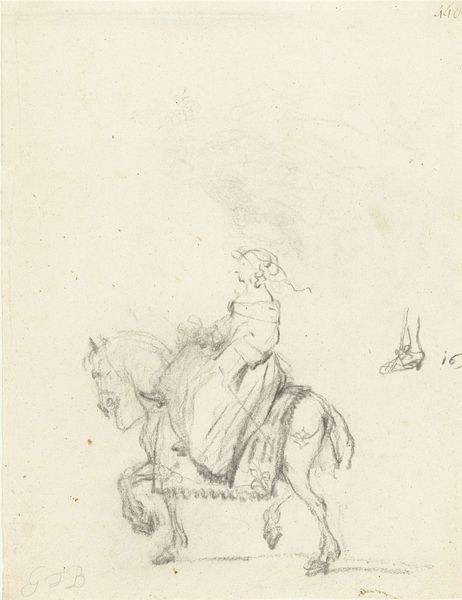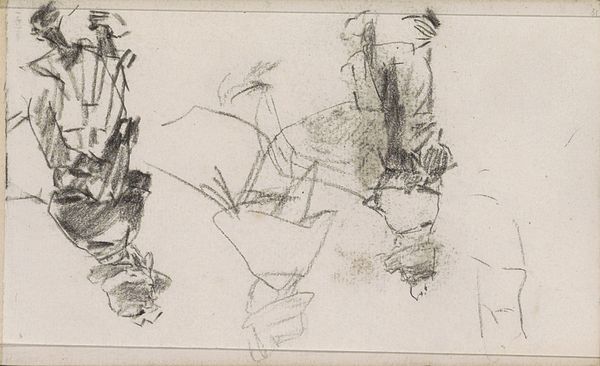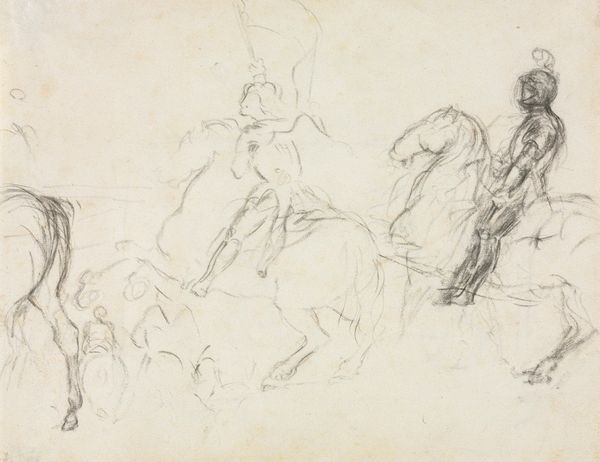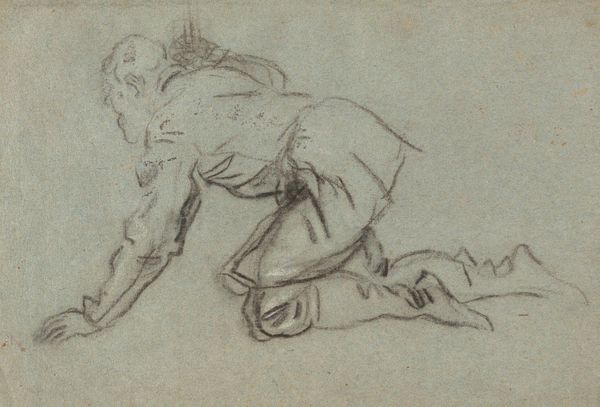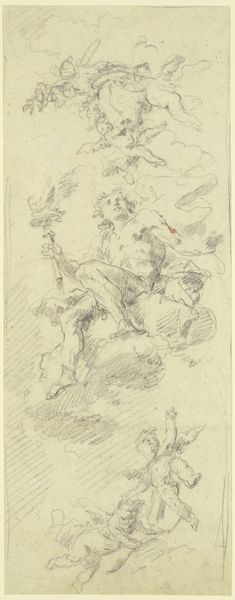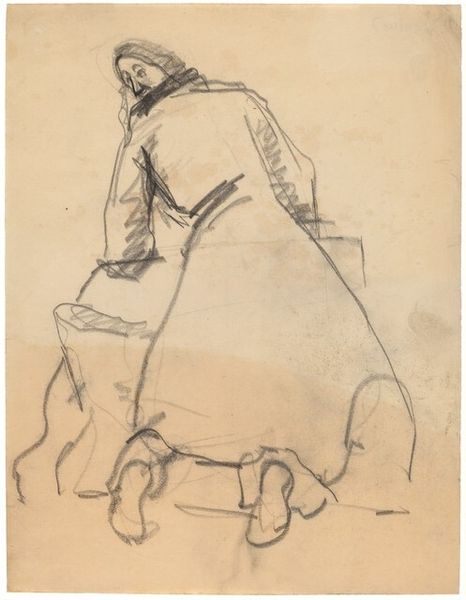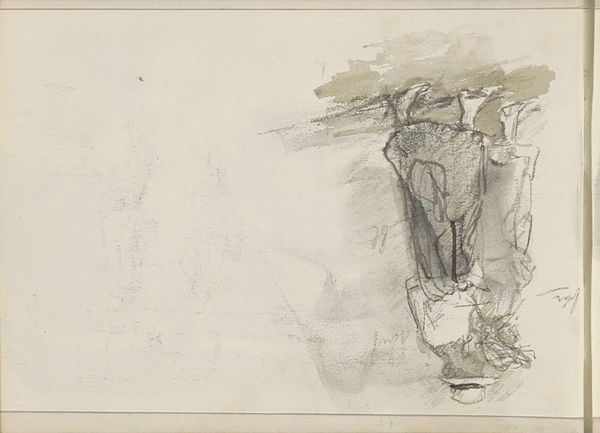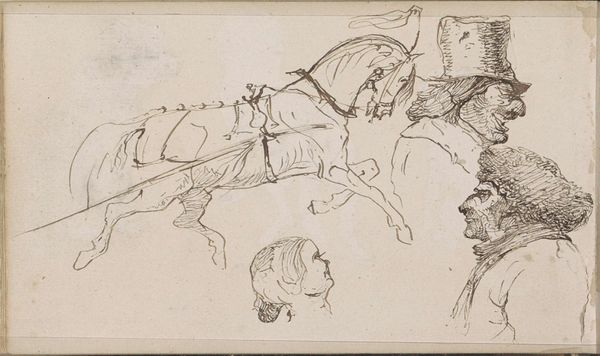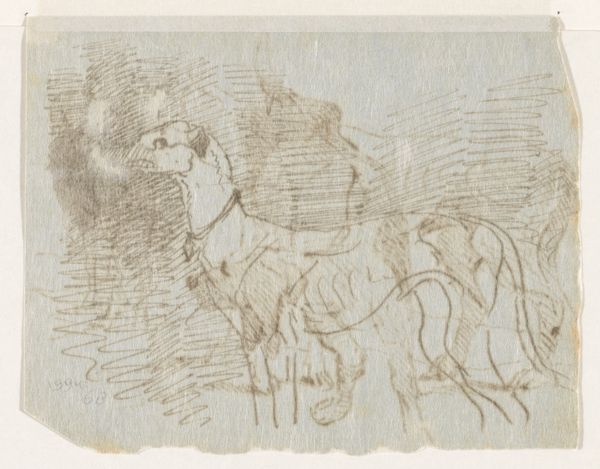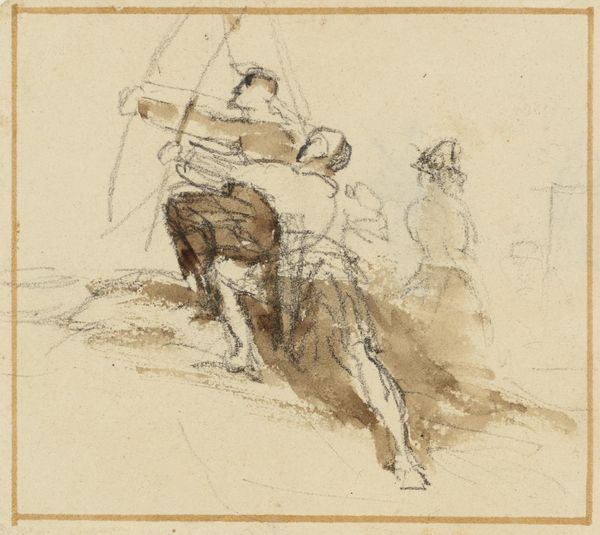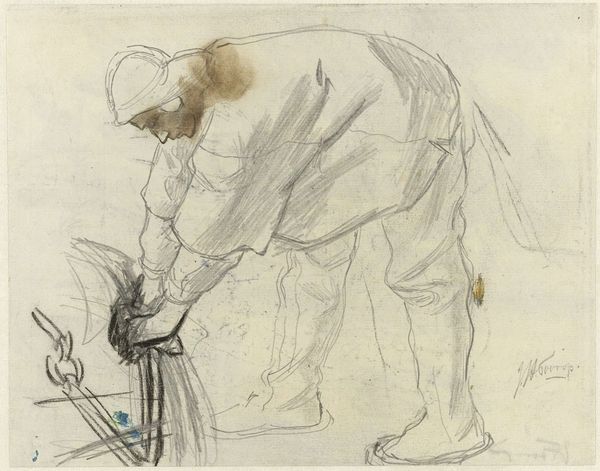
Vrouw te paard, van opzij gezien, met schetsje van een onderbeen en voet before 1660
0:00
0:00
drawing, paper, pencil
#
portrait
#
drawing
#
imaginative character sketch
#
quirky sketch
#
dutch-golden-age
#
landscape
#
figuration
#
paper
#
personal sketchbook
#
ink drawing experimentation
#
pen-ink sketch
#
pencil
#
line
#
sketchbook drawing
#
genre-painting
#
storyboard and sketchbook work
#
sketchbook art
#
fantasy sketch
#
erotic-art
#
realism
#
initial sketch
Dimensions: height 138 mm, width 162 mm
Copyright: Rijks Museum: Open Domain
Curator: Gesina ter Borch, before 1660, gifted us this intriguing work, "Vrouw te paard, van opzij gezien, met schetsje van een onderbeen en voet," currently residing at the Rijksmuseum. It's a pen and pencil drawing on paper. Editor: Immediately, there's a whimsical, almost playful air about it. The sketchiness gives it an intimate, immediate feel. It’s not about rigid representation, but the suggestion of movement and form. Curator: Absolutely. As a study, we can glean into Ter Borch's artistic process, examining her application of line and shadow. The paper itself becomes part of the story, showing its age. What ink was used? Was the paper handmade? Editor: Right. Looking closer, though, who is this woman? The equestrian portrait has historically been used to project power, specifically masculine authority. So, a woman depicted this way – especially rendered by a female artist – challenges traditional notions of gender roles and class. How subversive was it for a woman to portray another woman taking on this traditionally male symbol? Curator: Indeed, we must consider the role of women within artistic production during the Dutch Golden Age. Access to certain materials or patronage would have been governed by societal restrictions and access to artisanal knowledge of how inks were manufactured. Editor: We can consider if the loose underdrawing reflects the restrictions placed on female artists, a space where a certain type of freedom flourished precisely because it wasn't intended for public display or sale. It’s a glimpse behind the scenes. And, who was the model? Was she from a higher social class? It prompts so many questions. Curator: It truly does. Looking at it materially, you can tell the horse's movement is captured economically with brisk strokes of graphite while her dress displays cross-hatching adding dimension and suggesting heavier material. Ter Borch makes artistic decisions to highlight her social position through the very fabric itself. Editor: So well said! And those details – the horse’s decorated harness and her confident bearing, all these details push us to explore not only how it was made but why. It challenges conventional portraiture while implicitly questioning societal expectations around gender. Curator: Thinking about the materials and her place in the Dutch art world offers such a fuller understanding of her work here. Editor: And framing that through her gaze adds a complex social and historical dimension.
Comments
No comments
Be the first to comment and join the conversation on the ultimate creative platform.
